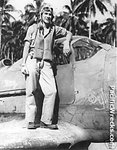How did the USAAF acquire an aircraft during and before WW2?. Did manufacturers approach some section within the USAAF or did a certain section develop a specification in accordance with a need. How did it interact with the Dept of Defense and develop an aircraft that 'might be required'
I know that by 1945 something called "air material command" existed. I am not an American (happy 4th July incidentally) and I suppose am after a few pointers and references.
The UK system seemed to involve the Ministry of Defence and the Air Ministry. The Germans had the Armaments Ministry, the RLM (Reich's Luftfahrts Ministerium and the Luftwaffe itself which had offices such as the "Technisches Ampt" a system that didn't always go well.
This came out of search for how the "Amerika Bomber" and the B-36 Intercontinental Bomber (The Germany Bomber?) came into being; independent projects designed to be intercontinental bombers. Did Roosevelt for instance say that we might need an aircraft that can bomb Europe since presumably only he and a few knew what policy direction he was manoeuvring towards. How did proto Intercontinental Bombers such as the Douglass B-19 and Boeing B-15 come about.
It also occurs to me that with excellent engineers on all sides that this aspect can be extremely important in addition personal opinions of the officers often stifled promising aircraft and technology while promoting things that just didn't work out.
I know that by 1945 something called "air material command" existed. I am not an American (happy 4th July incidentally) and I suppose am after a few pointers and references.
The UK system seemed to involve the Ministry of Defence and the Air Ministry. The Germans had the Armaments Ministry, the RLM (Reich's Luftfahrts Ministerium and the Luftwaffe itself which had offices such as the "Technisches Ampt" a system that didn't always go well.
This came out of search for how the "Amerika Bomber" and the B-36 Intercontinental Bomber (The Germany Bomber?) came into being; independent projects designed to be intercontinental bombers. Did Roosevelt for instance say that we might need an aircraft that can bomb Europe since presumably only he and a few knew what policy direction he was manoeuvring towards. How did proto Intercontinental Bombers such as the Douglass B-19 and Boeing B-15 come about.
It also occurs to me that with excellent engineers on all sides that this aspect can be extremely important in addition personal opinions of the officers often stifled promising aircraft and technology while promoting things that just didn't work out.


